
The Best Time to Visit Antarctica, We Can Help You Decide | Travel Blog
Deciding on the best time to visit Antarctica is like trying to solve a captivating puzzle.
This icy wonderland, with its pristine landscapes and extraordinary wildlife, holds different treasures in every season.
The key? Understanding what each Antarctic season has to offer.
Whether you're yearning for penguin chicks' first steps or the sight of majestic whales breaching, timing your journey right will make all the difference. The best time to visit Antarctica, after all, depends on what magical moments you wish to witness.
Table of content
Antarctica's Allure: The Ultimate Adventure
- Exploring the Antarctic Peninsula
- Vibrant Wildlife Encounters at South Georgia Island
- Navigating Through Iceberg-Filled Channels at the South Shetland Islands
The Main Travel Seasons in Antarctica
Antarctica in October: A Journey into the White Continent's Spring Awakening
- The Allure of Antarctic Spring
- A Paradise for Wildlife Enthusiasts
- Bask In Warmer Weather Conditions
Advantages of Visiting Antarctica in November
- A Pristine Landscape
- Wildlife Wonders
- Cruising Through Icebergs
- Tips For Your Trip
- Summer's Warm Embrace - A Time of Abundance
- Experience the Antarctic Summer in December
- Encounter Lively Wildlife
- Enjoy Mild Weather Conditions for Exploration
- Experience the Magic of Antarctica in January
- Visiting in February: The Advantages
- Warmer Weather Conditions
- Prolific Wildlife Sightings
- Northern Lights Phenomenon
- Avoiding Peak Tourist Season
- March: A Fantastic Time to Visit
- Witness Awe-inspiring Wildlife
- Explore Dramatic Landscapes & Accessible Regions
- The Essentials
- Crowd Favorite: Embracing Antarctic Summer
- Balancing Act: Spring Revival & Autumn Farewell
- For The Bold Adventurers: Winter Silence
FAQs in Relation to Best Time to Visit Antarctica
- What is the best month to go to Antarctica?
- How many days do you need to visit Antarctica?
- How much does a trip to Antarctica cost?
- What is the best age to go to Antarctica?
Antarctica's Allure: The Ultimate Adventure
The mystique of Antarctica, the white continent, is compelling. This untouched wilderness at the bottom of our planet tempts with its pristine snowy landscapes and unique wildlife.
A visit to Antarctica provides an opportunity to explore regions such as the Antarctic Peninsula, South Georgia Island, and South Shetland Islands. Each region presents a different aspect of this captivating destination.
Exploring the Antarctic Peninsula
This northernmost part of mainland Antarctica extends towards South America, offering some breathtaking scenery on earth - towering icebergs and snow-capped mountains rising from deep blue waters are just a few examples.
During your exploration here, you might encounter seals basking on floating chunks of ice or penguins waddling along pebbly beaches. A journey through narrow straits like Lemaire Channel offers panoramic views that will be etched in your memory forever.
Vibrant Wildlife Encounters at South Georgia Island
If it's unparalleled wildlife encounters during your trip to Antarctica that you're after, then consider adding South Georgia Island. South Georgia Island is renowned for its abundant wildlife, with millions of breeding birds each year including albatrosses, petrels, shearwaters and more - a spectacle comparable to Africa's Serengeti. There are also King Penguins who form rookeries stretching beyond the eye can see. History buffs won't want to miss out on visiting Shackleton's gravesite located in Grytviken cemetery right within the island itself.

Navigating Through Iceberg-Filled Channels at the South Shetland Islands
- You'll find a volcanic archipelago known as South Shetland Islands, situated northwest off the Antarctic Peninsula, which serves up another intriguing stopover within a realm where visitors may witness colonies upon colonies of densely packed chinstrap penguins while navigating iceberg-filled channels by zodiac boats under expert guidance
Key Takeaway:
Visiting Antarctica is an adventure filled with breathtaking landscapes and vibrant wildlife encounters. Explore regions like the Antarctic Peninsula, South Georgia Island, and South Shetland Islands for a captivating journey through pristine snowy wildernesses, bustling penguin colonies, and iceberg-filled channels.
The Main Travel Seasons in Antarctica
Antarctica, a pristine wilderness at the bottom of our world, is characterized by dramatic seasonal shifts. Each season offers unique experiences and adventures for travelers who dare to venture into this icy wonderland.
Spring Revival - From Ice to Life
In October and November, spring emerges from the grip of winter's chill. As temperatures inch above freezing point, sea ice begins its retreat under warmer weather conditions. This period marks an exciting time as wildlife starts returning after their long migration journey north during harsh winters.
A highlight among these arrivals are Emperor Penguins laying eggs amidst newly formed colonies, an awe-inspiring sight that makes visiting Antarctica in spring truly worthwhile.
Besides penguins' mating rituals, it's also prime time for whale watching as these majestic creatures start appearing in Antarctic waters, again a spectacle you wouldn't want to miss on your Antarctic expedition.
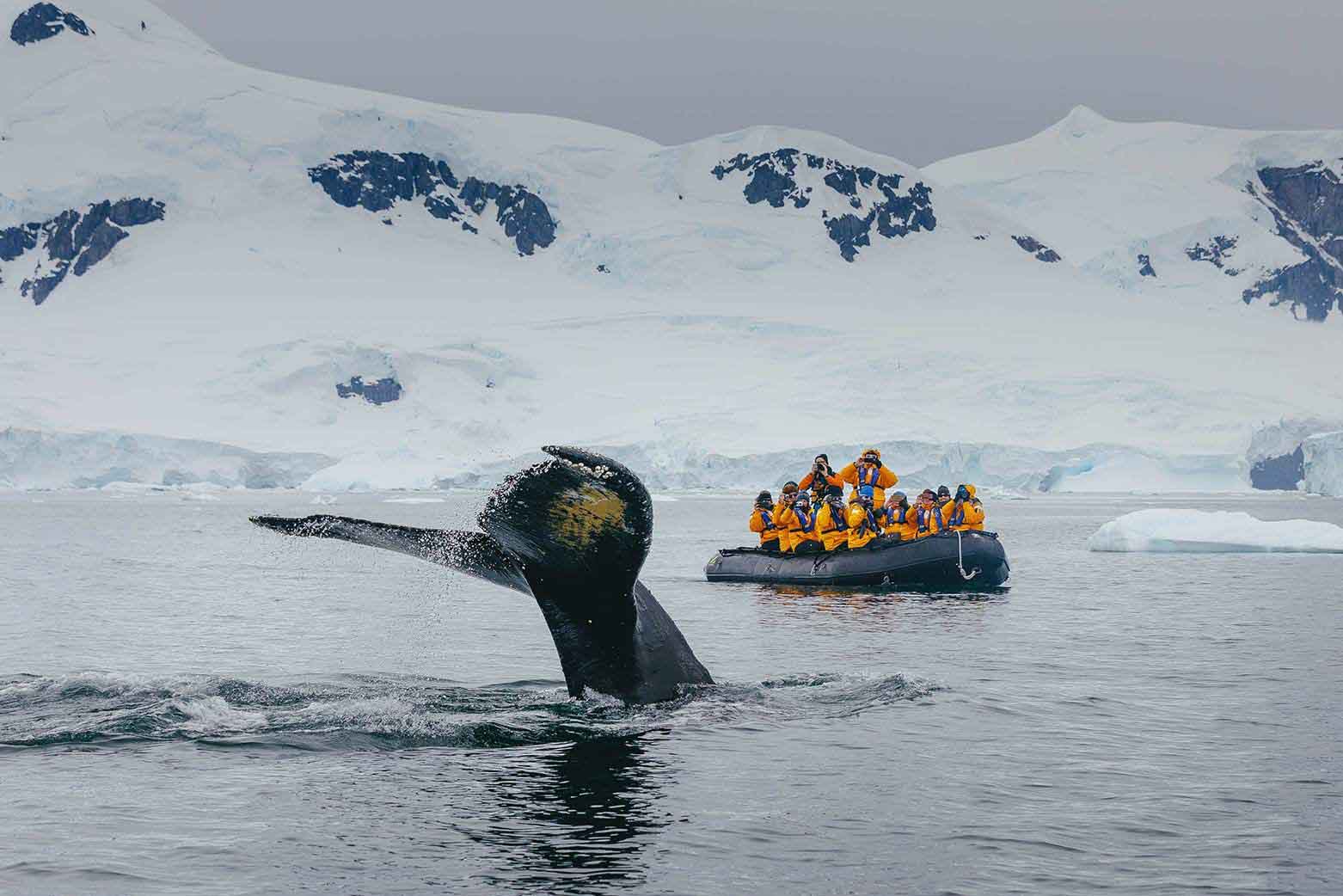
Antarctica in October: A Journey into the White Continent's Spring Awakening
If you're planning to visit Antarctica, consider making your journey during the month of October. This time marks the start of spring and is an exceptional period for experiencing this vast, white continent.
The Allure of Antarctic Spring
Visiting Antarctica in late October signifies entering a world that's waking up from its long winter slumber. As temperatures rise above freezing, sea ice breaks apart, creating channels for ships to traverse through Antarctic waters towards the South Shetland Islands and Falkland Islands.
This early tourist season sees fewer crowds than peak months like December or January, giving travelers a more intimate experience with nature. The scenery is at its most pristine state - pack ice formations are still intact and fresh snow covers everything.
A Paradise for Wildlife Enthusiasts
In terms of wildlife viewing, it's mating season! Expect encounters with king penguins strutting their stuff while gentoo penguins build nests preparing for offspring arrival. Seals also become more active as they emerge from their winter hideouts onto melting sea ice floes.
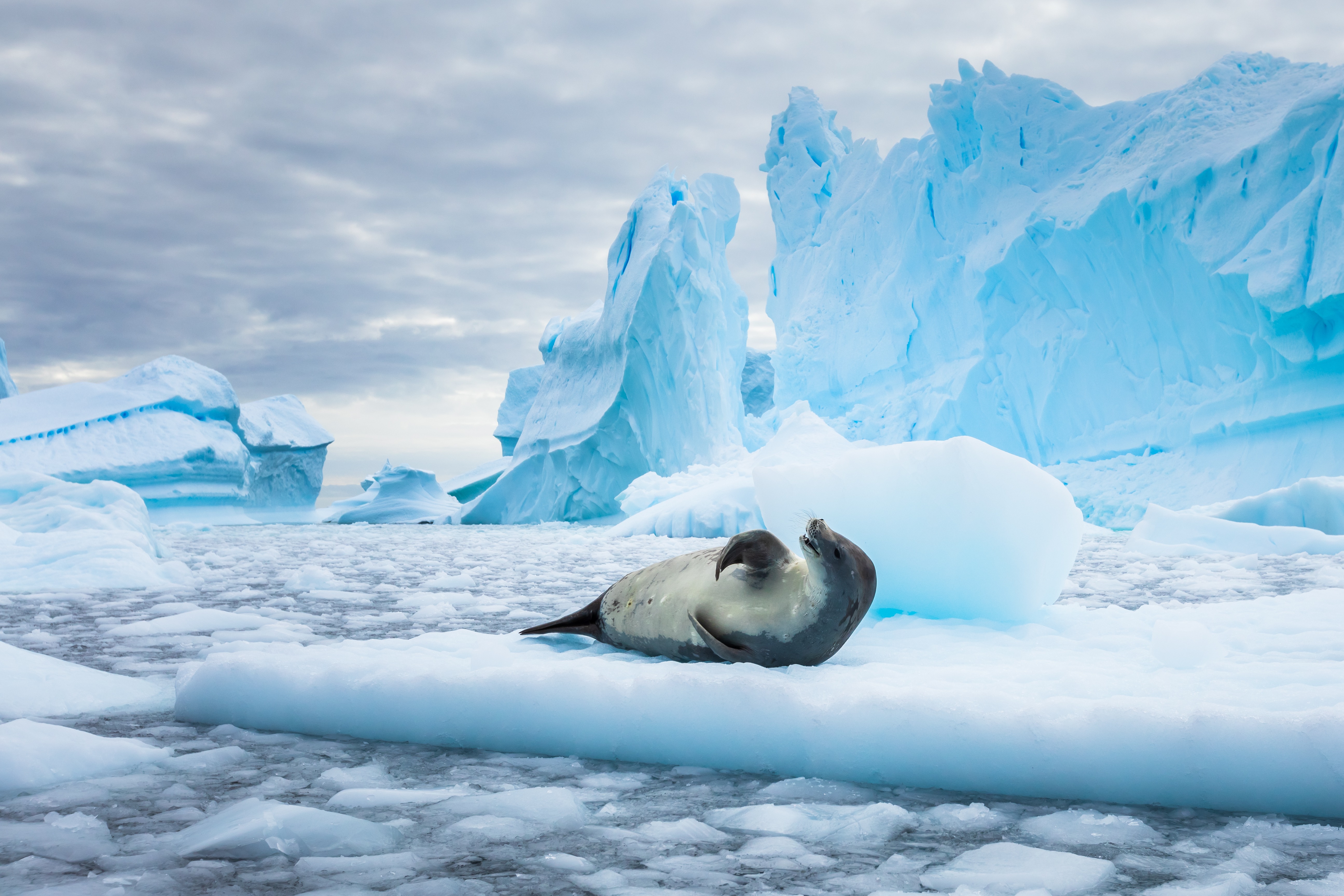
Bask In Warmer Weather Conditions
In contrast to the northern hemisphere autumn chills, the Antarctic summer starts early here due to Earth's tilt. Known as Austral Summer, days lengthen dramatically, providing warmer weather conditions ideal for exploring outdoors without extreme cold hampering activities on your visit to Antarctica.
Advantages Of Visiting In October:
- Fewer tourists mean less competition when landing ashore & better opportunities for close-up wildlife interactions.
- Crisper views – clearer skies offer spectacular vistas across untouched landscapes.
- Mild weather conditions make exploration more comfortable compared with harsher winter months.
- Late-October visitors might be lucky enough to witness the first emperor penguin chicks hatching!
To ensure an unforgettable adventure amidst changing seasons on your next trip visiting Antarctica, remember these tips:
Plan well ahead considering limited availability during certain periods; dress appropriately respecting unpredictable weather patterns; always follow guidelines set by tour operators ensuring safety & protecting the delicate ecosystem around us!
Advantages of Visiting Antarctica in November
The allure of Antarctica, the white continent, is undeniable for avid travelers. As the austral summer begins in late October and early November, it's an exceptional time to visit Antarctica.
A Pristine Landscape
In November, the Antarctic Peninsula and surrounding islands such as the South Shetland Islands are emerging from their winter slumber. The sea ice breaks up, revealing landscapes untouched by human presence - pristine pack ice formations glistening under sunlight create a surreal experience that will leave you mesmerized.
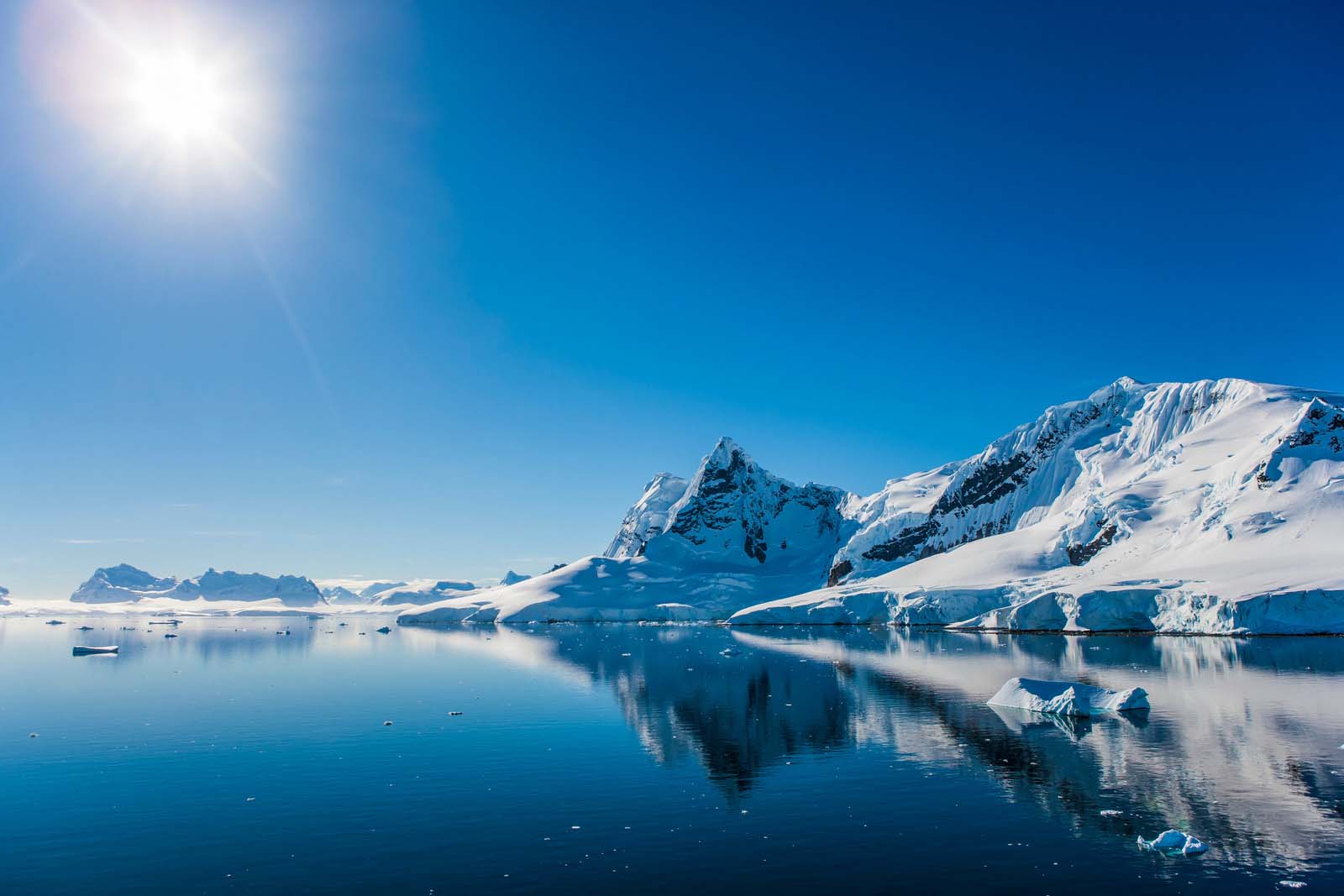
Wildlife Wonders
The start of warmer weather brings with it the mating season for many species. You'll witness colonies of Gentoo penguins preparing nests and courting rituals; seals lounging on ice floes; seabirds filling the skies; and if you're lucky, sightings of majestic whales navigating through Antarctic waters. A trip to the Falkland Islands may even reward you with sights of King Penguins!
Cruising Through Icebergs
Antarctic cruises in November offer unique opportunities not available during the peak tourist season (late December to early January). With fewer tourists around, there's more flexibility for spontaneous landings or zodiac cruises among towering blue-tinted icebergs – truly a once-in-a-lifetime adventure!
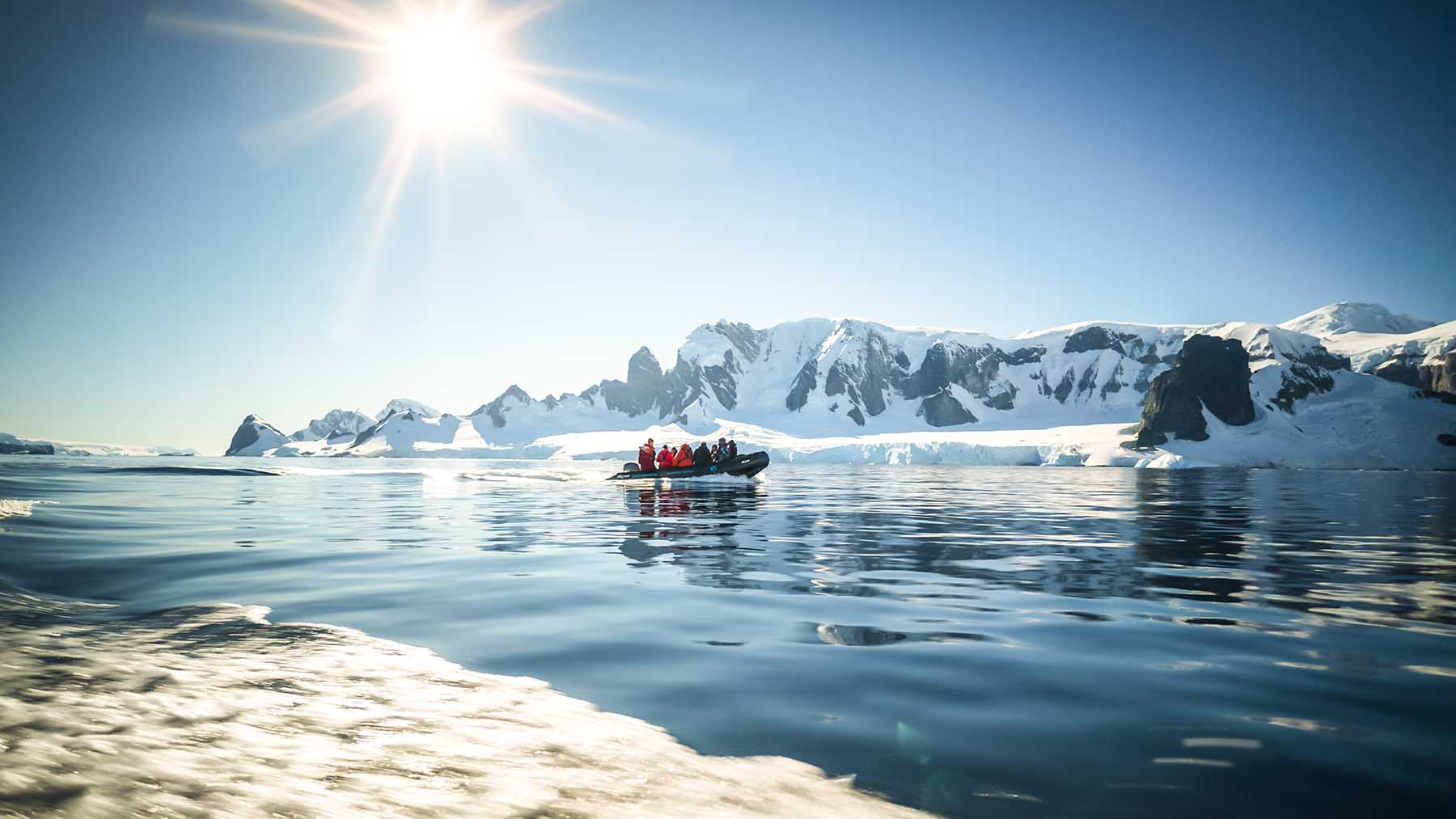
Tips For Your Trip
- Weather Conditions: While temperatures are colder than later in the summer months (typically between -2°C / 28°F and -8°C / 18°F), visitors find this period very manageable with proper clothing layers.
- Pack Light: Remember most Antarctic cruises provide necessary outerwear including boots and waterproof pants, which can save valuable luggage space.
Remember that visiting Antarctica requires careful planning due to limited availability, especially during its short tourist season within the southern hemisphere’s summer months.
So whether your dream is stepping foot on the Antarctic Circle or witnessing fluffy penguin chicks hatching – booking your travel plans now ensures you won't miss out on this great time!
Summer's Warm Embrace - A Time of Abundance
The summer months ”December through February”are often considered peak tourist season due to milder weather conditions and extended daylight hours which allow more extensive exploration opportunities both on foot or via zodiac cruises.
Now is the perfect time to witness fluffy penguin chicks hatching and adapting to their frosty surroundings, a heartwarming scene that will surely make your summer visit memorable.
Moreover, you might also get lucky enough to see whales breaching out in open water while they feed on krill, their main diet source during these bountiful months. It's truly an incredible sight.
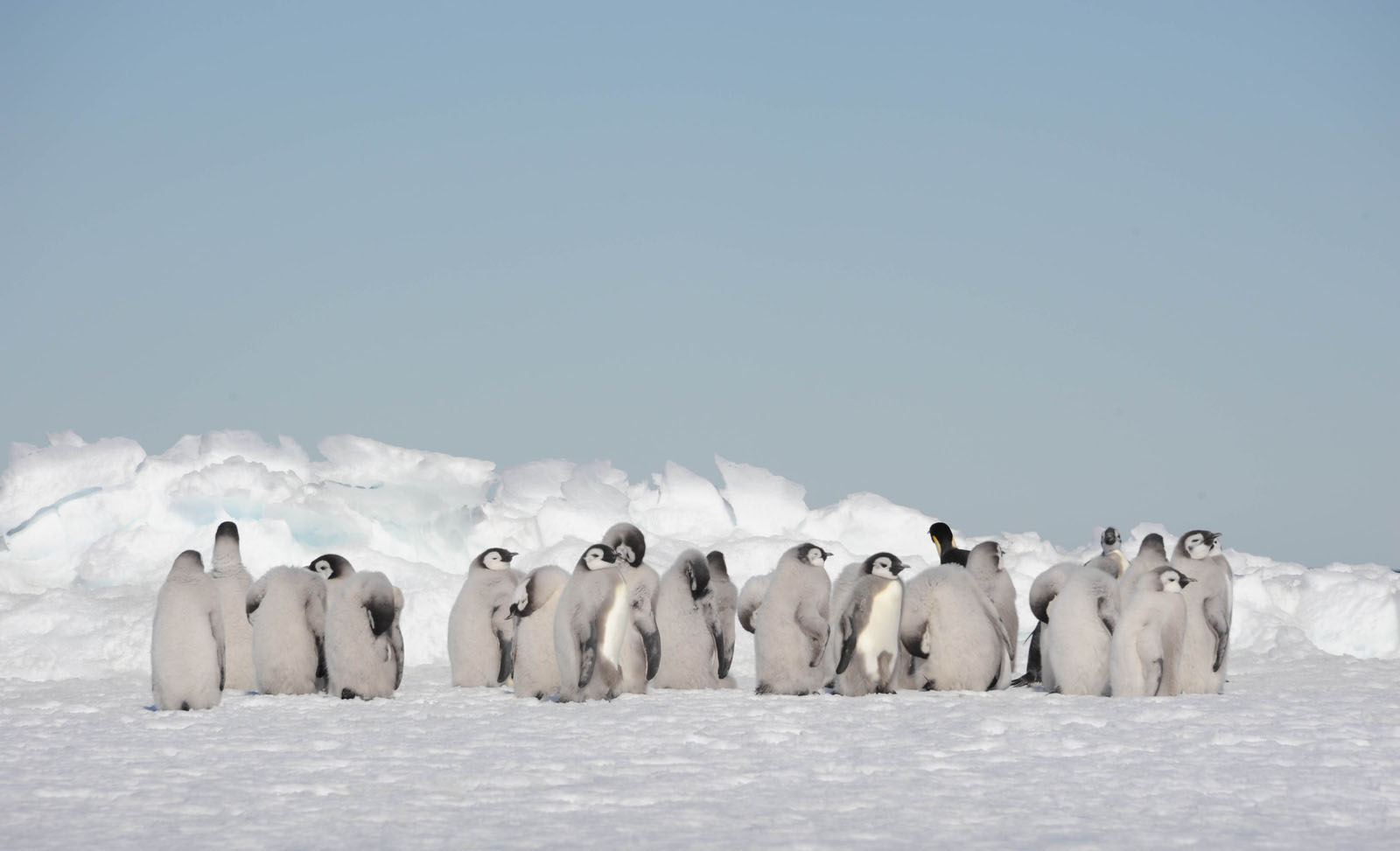
Experience the Antarctic Summer in December
In late November and early December, Antarctica welcomes its summer months with warmer temperatures, making it an ideal time to embark on one of our luxury Antarctic cruises. This period marks the beginning of the tourist season as sea ice breaks up around the South Shetland Islands and Falkland Islands, allowing ships to navigate through Antarctic waters towards the majestic Antarctic Peninsula.
Encounter Lively Wildlife
December is a great time to visit because it coincides with the mating season for many species found in Antarctica, including King Penguins and Gentoo Penguins. Witnessing these creatures' courtship rituals can be both entertaining and educational! Moreover, by late December or early January, penguin chicks start hatching, adding another layer of excitement for nature lovers visiting Antarctica.
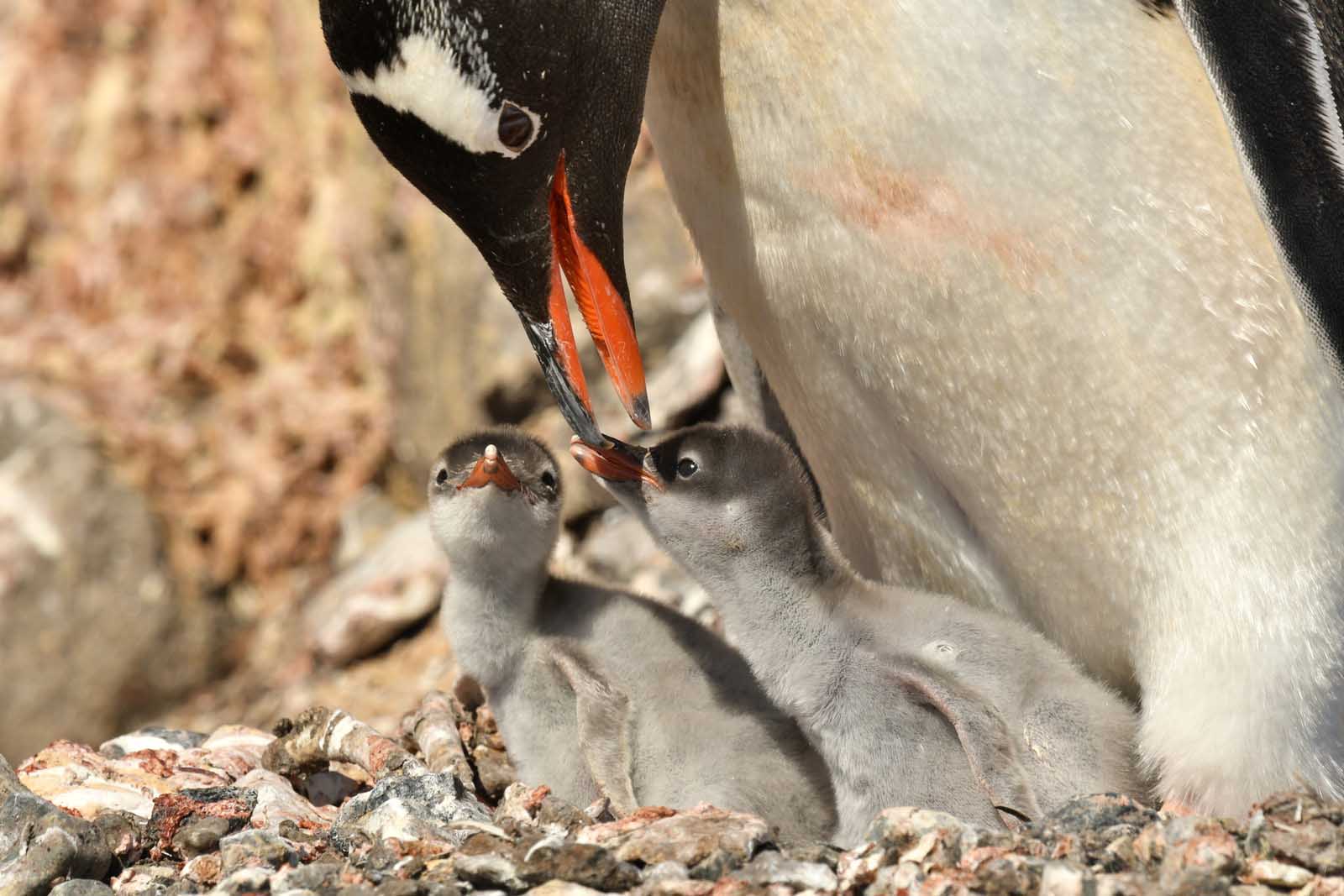
Enjoy Mild Weather Conditions for Exploration
The relatively warmer weather conditions during December make exploration more comfortable compared to other times of the year. With less pack ice obstructing your way, you can venture further south, crossing even beyond the mythical Antarctic Circle.
Tips to Make Your Trip Memorable in December
- Plan Early: Due to high demand in the peak season (Austral summer), ensure your bookings are done well ahead so as not to miss out on this amazing experience.
- Dress Appropriately: Even though temperatures rise above freezing point during the daytime in summers, packing layers will keep you warm against chilly winds.
- Pack Sunscreen: The sun's reflection off snow can cause severe burns, hence sunscreen is a must-have item while visiting Antarctica, especially during sunny days.
In conclusion, visiting Antarctica in December offers a unique opportunity to witness the beauty of the white continent and its abundant wildlife. Whether you're captivated by the courtship rituals of penguins or yearn to explore the vast landscapes, December provides the perfect conditions for an adventure of a lifetime. Plan your trip early, dress appropriately, and don't forget your sunscreen. Get ready to embark on an unforgettable journey to Antarctica!
Experience the Magic of Antarctica in January
January is considered one of the best months to visit Antarctica. It marks the peak of the Antarctic summer, offering relatively warmer weather conditions with temperatures around -2°C (28°F). The milder temperatures make it more comfortable for exploration, and many sea ice barriers break up, allowing easier access to areas like the South Shetland Islands and Falkland Islands.
Moreover, January is a time of vibrant wildlife activity in Antarctica. Penguin chicks start hatching, and you can witness the adorable sight of penguins nurturing their young ones or engaging in mating rituals. Seals can also be spotted lounging on pack ice, adding to the incredible wildlife encounters.
Another advantage of visiting Antarctica in January is the long daylight hours. Due to the Earth's tilt toward the sun, you'll have extended daylight for your day tours, providing more time for exploration and immersing yourself in the breathtaking landscapes.
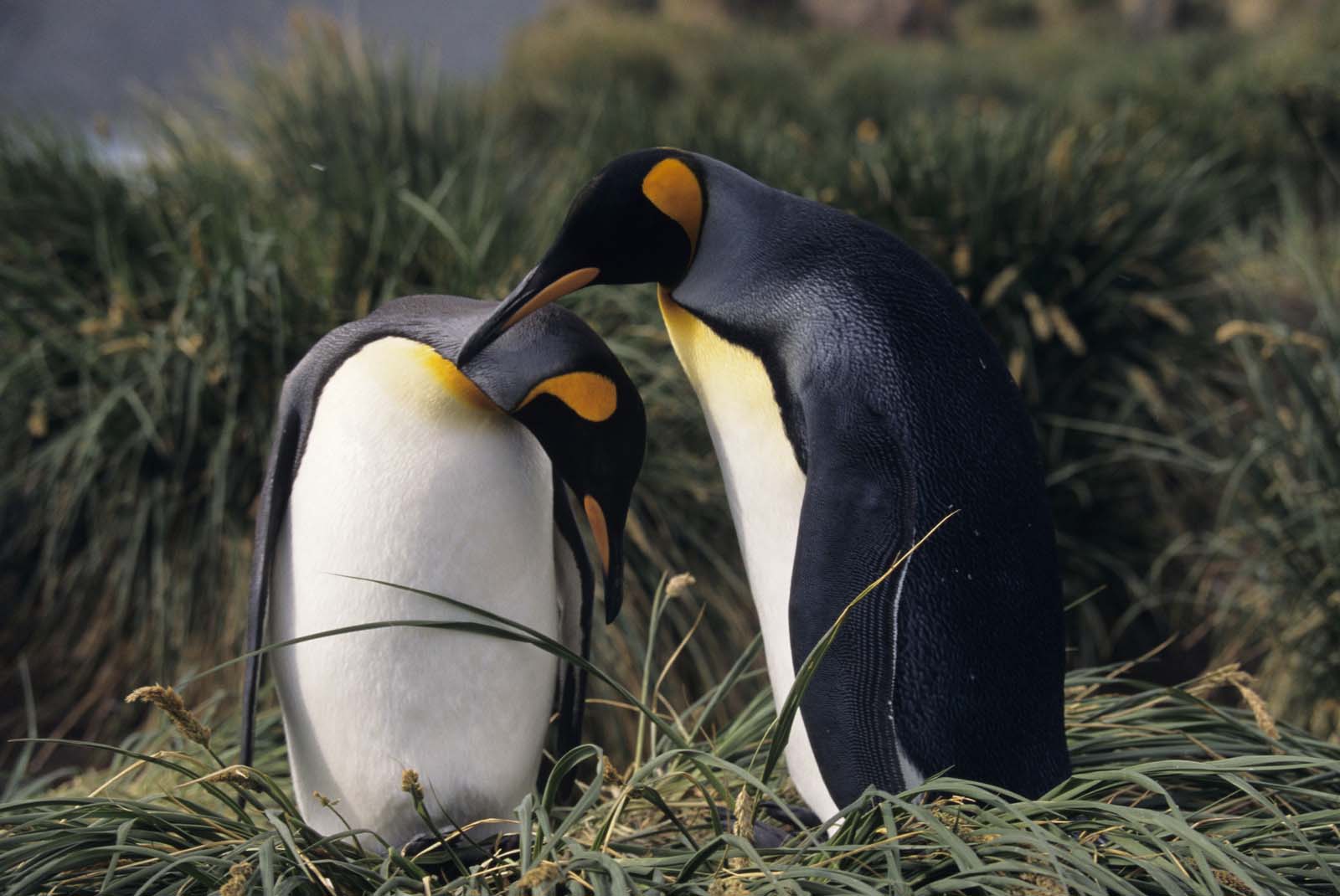
Tips for Visiting in January: Plan Early!
- Pack appropriate clothing: Despite being summer, Antarctica's standards are different. Layered clothing, including thermal wear, will keep you comfortable in the chilly breezes off Antarctic waters.
- Sun protection gear: With almost 24-hour sunlight reflecting off the white surfaces, sunglasses and sunscreen are essential to protect yourself from the intense glare.
- Eco-friendly travel essentials: As responsible travelers, let's ensure minimal impact on this pristine ecosystem. Carry eco-friendly toiletries and water bottles, and adhere strictly to guidelines provided by tour operators like Voyagers Travel Company, who specialize in luxury experiential travel programs tailored for discerning adventurers like yourself!
In conclusion, January offers the best time to visit Antarctica. The peak of the Antarctic summer, vibrant wildlife activity, and long daylight hours create an unforgettable experience. Plan your trip early to secure your spot, as this period is part of the peak tourist season. Don't miss the opportunity to explore the wonders of Antarctica and create memories that will last a lifetime.
Visiting in February: The Advantages
One of the crucial times to visit Antarctica is in February. This is considered one of the summer months in the region, offering a range of unique experiences and opportunities. During this time, you can explore the Antarctic Peninsula, as well as the South Shetland Islands and Falkland Islands.
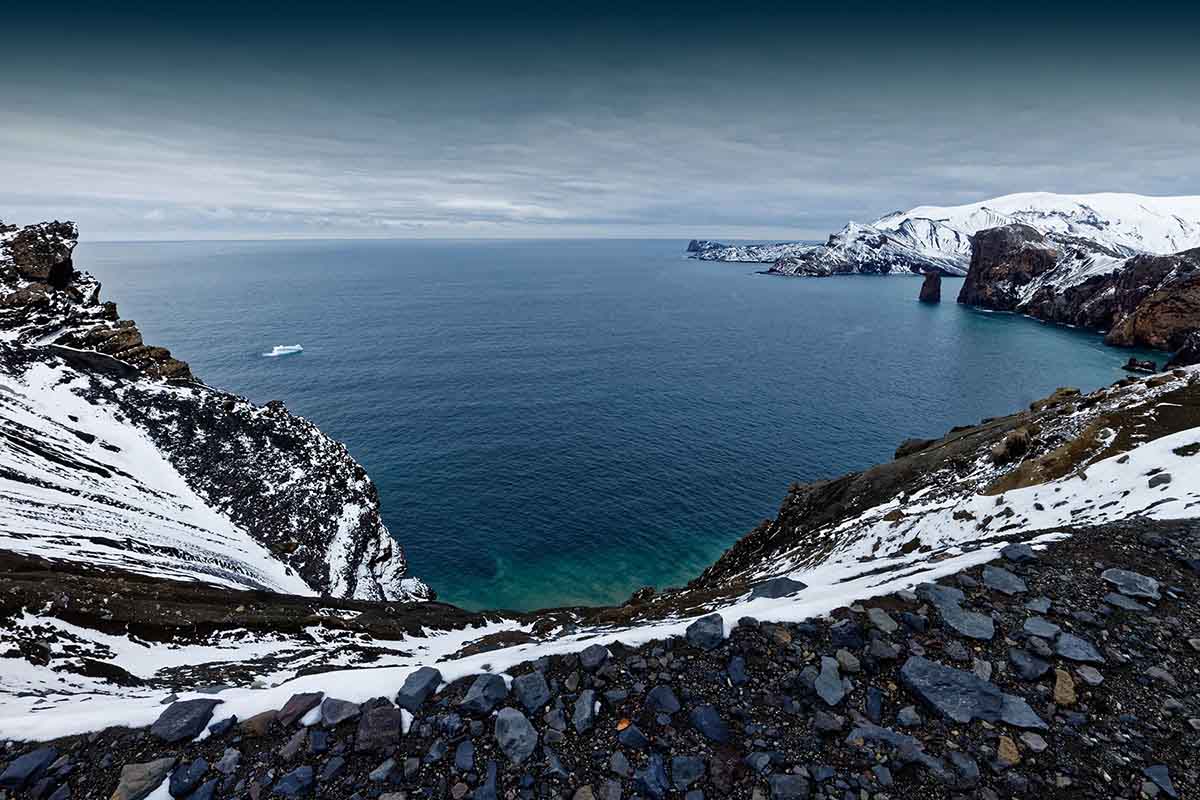
Warmer Weather Conditions
Contrary to its reputation for extreme cold, Antarctica experiences relatively warmer temperatures in February. This makes it more comfortable for visitors, with average highs around -2°C (28°F). The sea ice also begins to break up, allowing for Antarctic cruises to navigate through channels that are otherwise inaccessible.
Prolific Wildlife Sightings
It is during this time that penguin chicks start maturing, and adult king penguins begin their mating season. You can witness colonies bustling with activity, particularly the abundant Gentoo Penguins, as well as seals basking on pack ice.
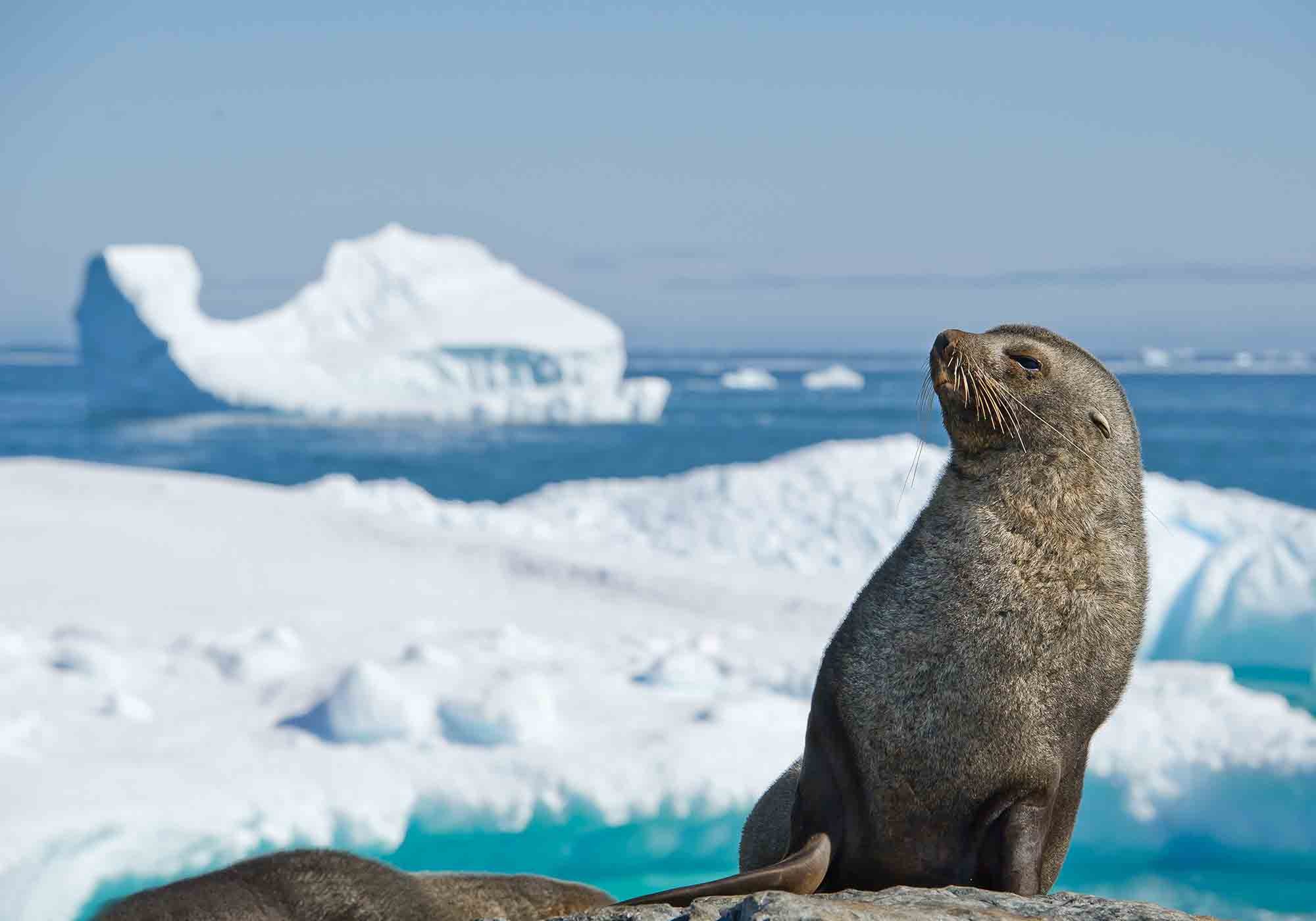
Northern Lights Phenomenon
If you're lucky, late February presents an opportunity to witness one of nature's most stunning displays: the Aurora Australis, also known as the Southern Lights. This mesmerizing natural light show is often visible when cruising near the Antarctic Circle under clear skies.
Avoiding Peak Tourist Season
Another advantage of visiting Antarctica in February is that it falls towards the end of the tourist season. This means fewer crowds compared to peak months like December and January, while still being within the Austral Summer window. It provides a perfect balance between good weather conditions and relative tranquility compared to busier periods.
When planning your trip to Antarctica, it's important to book early due to limited availability, especially if you have specific dates in mind. Antarctica has become increasingly popular among avid travelers, so securing your spot in advance is crucial.
Before packing your bags, consider checking out some practical tips from experienced adventurers on the best gear suited for these types of trips. Being well-prepared will ensure you have a memorable and enjoyable experience exploring the wonders of Antarctica.
Autumn Farewell - Last Call for Wildlife Viewing
When March ushers in across the vast icy expanse of Antarctica, daylight hours start decreasing but there's still plenty going on despite changing weather conditions. Seal pups become increasingly visible along shorelines, a delightful sight not easily forgotten.
Bird species such as skuas and petrels begin their northbound migration before colder temperatures set in a poignant reminder about nature's cyclical patterns even within this remote part of our planet.
March: A Fantastic Time to Visit
March, in particular, is an underrated yet fantastic time to explore Antarctica. During this month, the weather conditions are milder compared to the harsh winter months. Daytime temperatures hover around freezing point (0°C or 32°F), and there is less wind, enhancing your overall experience on Antarctic cruises.
Witness Awe-inspiring Wildlife
March also offers unique opportunities for wildlife encounters. You'll have the chance to witness penguin chicks learning how to swim and becoming independent. Seals enjoy their last few weeks on the ice before migrating northward as the sea ice breaks up. Whale sightings are particularly high during this month as they feed heavily before their long migration back towards northern hemisphere waters.
Explore Dramatic Landscapes & Accessible Regions
The receding pack ice in March opens up access to regions like the South Shetland Islands and Falkland Islands, which may not be accessible earlier due to heavy sea ice coverage. It's a great time to uncover more of Antarctica's secrets and witness breathtaking late-summer sunsets over the Antarctic Peninsula.
Tips for Your March Visit to Antarctica
- Plan Early: Despite being late in the peak season compared to December-January visits, demand remains high. It's important to plan early, especially if you're seeking luxury experiences.
- Pack Wisely: While the weather conditions are milder compared to other times of the year, it's still essential to prepare for potential cold snaps. Pack layers, along with waterproof clothing and sturdy footwear suitable for walking across slushy terrain or snow-covered trails.
- Capture Unforgettable Moments: Don't forget to bring your camera! With extended daylight hours throughout most days in March and stunning natural scenery, there are countless photographic moments waiting to be captured.
Key Takeaway:
Antarctica's dramatic seasons each offer unique experiences. Spring, from October to November, sees wildlife return and penguins lay eggs. Summer (December through February) is peak tourist season with abundant daylight for exploration and witnessing hatching penguin chicks. Autumn in March offers last chances for wildlife viewing before winter sets in.
The Essentials
Crowd Favorite: Embracing Antarctic Summer
Summer months from December through February mark the peak tourist season in these southernmost reaches of our planet. This period is characterized by temperatures around freezing point and up to 24 hours of daylight due to a phenomenon known as the 'Midnight Sun'. These conditions offer ample opportunity for exploration and wildlife encounters amidst the Antarctic Peninsula's frozen vistas or South Georgia's abundant biodiversity.
In addition, summer brings a flurry of activity among local fauna - fluffy penguin chicks taking their first steps or whales breaching waters rich in krill. Zodiac cruising amongst towering icebergs or stepping foot on land at research stations like Port Lockroy becomes possible during this time too.
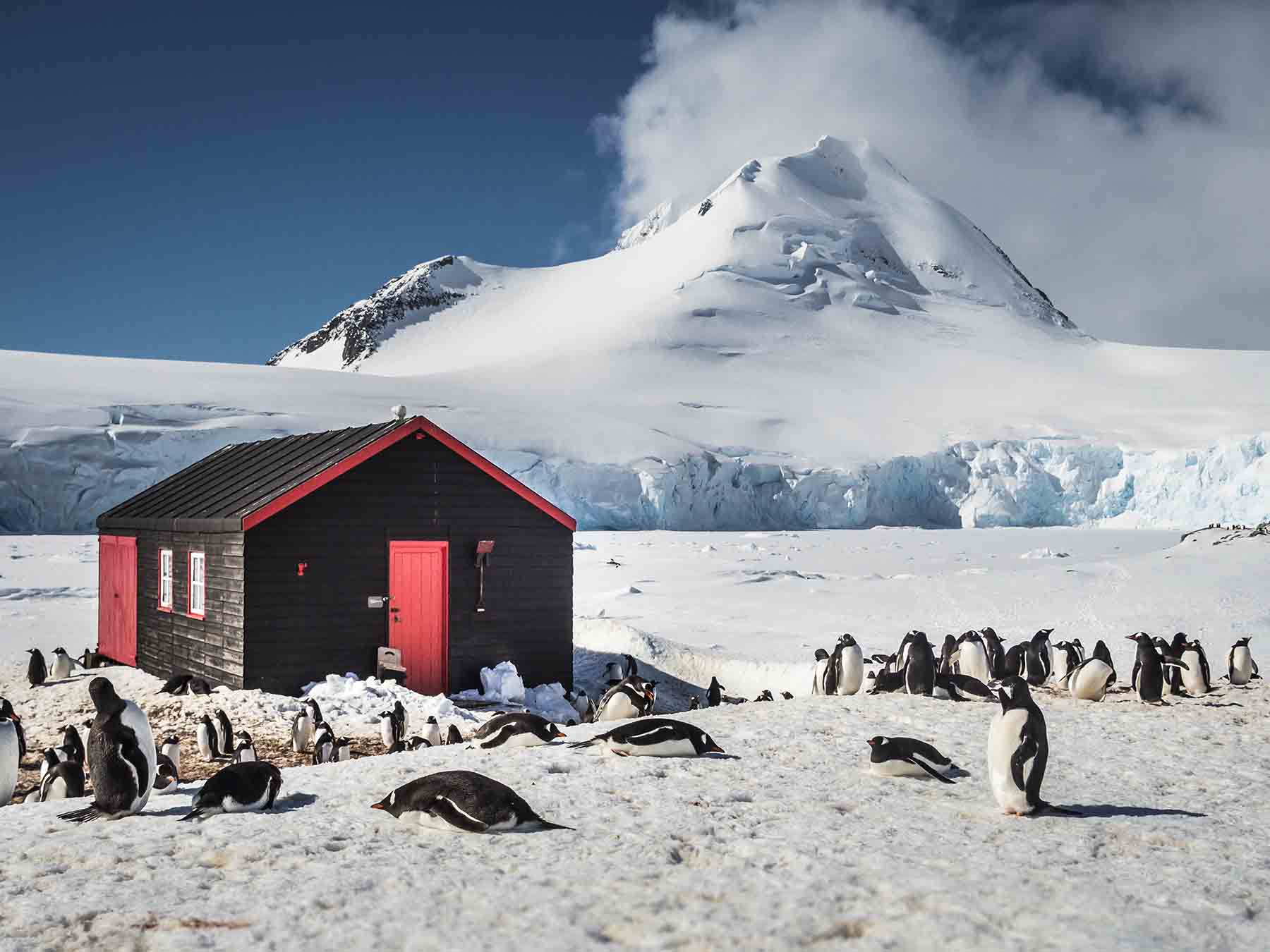
Balancing Act: Spring Revival & Autumn Farewell
If balancing cost savings with memorable sights sounds appealing, then consider traveling during shoulder season spring (October-November) or autumn (March-April).
During springtime, sea ice begins breaking after winter's firm grip; Emperor Penguins start laying eggs an event that draws birdwatchers worldwide. On the other hand, late March to early April sees seal pups frolicking in dwindling patches of snow while certain bird species prepare for migration southwards before colder weather sets back in.
Apart from lower prices compared to peak season rates, fewer tourists make the journey now and you may even get lucky enough to see giant icebergs freshly calved off glaciers a sight to behold indeed.
For The Bold Adventurers: Winter Silence
Surely not for the faint-hearted, the most daring adventurers might choose to visit between May and September, also referred to as the polar night, owing to complete darkness except occasional aurora displays if weather permits, casting ethereal lights across icy landscapes.
Key Takeaway:
For a thrilling Antarctic adventure, timing is crucial. Summer (December-February) offers ample exploration opportunities and wildlife encounters amidst 24-hour daylight. Shoulder seasons (spring: October-November; autumn: March-April) balance cost savings with unique sights like Emperor Penguins laying eggs or seal pups playing in snow. Winter visits promise ethereal aurora displays for the bravest adventurers
FAQs in Relation to Best Time to Visit Antarctica
What is the best month to go to Antarctica?
The optimal time for an Antarctic expedition is during the summer months, from December through February. This period offers milder weather and extended daylight hours.
How many days do you need to visit Antarctica?
A typical trip to Antarctica lasts between 10-14 days, including crossing the Drake Passage. However, longer expeditions can extend up to three weeks or more.
How much does a trip to Antarctica cost?
The price of an Antarctic voyage varies widely based on factors like travel duration and ship amenities, but expect costs starting around $6,990 per person for basic packages.
What is the best age to go to Antarctica?
There are no specific age restrictions for visiting Antarctica. It is suitable for adventurous travelers of all ages who are in good health and have a love for wildlife and exploration.
Conclusion
Antarctica, the white continent at the bottom of our world, is a place of mystery and unparalleled beauty.
The pristine landscapes, teeming wildlife-rich South Georgia, and untouched wilderness are just some of its many charms.
We've explored how each season in Antarctica offers unique experiences. Spring brings life back to this icy land while summer's warmth allows for extended exploration time.
Autumn provides one last chance for exceptional wildlife viewing before winter's silence sets in, with an opportunity to witness the mesmerizing dance of the Southern Lights across the sky.
The best time to visit Antarctica really depends on what you're hoping to experience. Whether it's witnessing emperor penguins laying eggs or watching whales breach as they feed on krill, there's something magical waiting for every adventurer out there!
If you're ready for your own Antarctic adventure, consider Voyagers Travel Company. We specialize in luxury and experiential travel programs tailored specifically for destinations like Antarctica! Our expert team will guide you through planning your dream trip, ensuring that you get the most out of your journey no matter when you decide to embark. Ready? Start planning today.
Some of our Antarctic Adventures
Experience the beauty and grandeur of Antarctica like never before with our range of luxury cruises. Discover this captivating continent aboard some of the most esteemed vessels in the industry:Ultramarine, Ocean Endeavour, Ocean Adventurer, World Explorer, and Ocean Diamond. These meticulously designed luxury boats offer you the opportunity to explore the icy landscapes in style and comfort. Each vessel boasts state-of-the-art amenities, spacious accommodations, and expertly crafted itineraries that promise an unparalleled adventure. Join us on one of our exceptional cruises and create lasting memories amidst the breathtaking backdrop of Antarctica's pristine wilderness.
Ultramarine

- Starting at $6,990: Your dream Antarctica adventure is within reach with Ultramarine's starting price. Enjoy unparalleled luxury without compromising on quality, making this expedition a remarkable value.
- Diverse Itineraries: Choose from an array of itineraries tailored to your preferences, ranging from 8 to 23 days. Whether you seek a comprehensive 23-day exploration or a shorter 8-day getaway, Ultramarine has the perfect journey for you.
- 14-Day Immersion: Immerse yourself in Antarctica's wonders with our 14-day itinerary, designed to provide ample time for wildlife encounters, breathtaking landscapes, and in-depth exploration.
- 16-Day Odyssey: For those seeking a more extensive adventure, our 16-day itinerary offers an enriched experience, allowing you to delve deeper into the heart of Antarctica.
- Expert Guided Tours: Accompanied by a team of experienced naturalists, scientists, and photographers, you'll gain valuable insights into the region's unique ecosystem and history.
- State-of-the-Art Amenities: Unwind in luxurious accommodations featuring modern design and premium comforts. Enjoy gourmet dining, a wellness center, a spa, a fitness center, and more.
- Enriching Activities: Engage in a variety of activities, including kayaking, ice climbing, and guided shore excursions, all designed to provide you with an immersive and unforgettable adventure.
- Sustainable Exploration: Travel responsibly with Ultramarine's commitment to environmentally friendly practices, ensuring that future generations can continue to experience Antarctica's pristine beauty.
- Captivating Wildlife: Witness penguins, seals, whales, and other iconic species in their natural habitat, capturing the essence of Antarctica's unparalleled biodiversity.
- Specifications:
- Staff And Crew : 140
- Draft: 16.4ft (5.1m)
- Registration : Marshall Islands
- Guests: 199
- Lifeboats: 4, Fully Enclosed
- Length : 420 Ft (128m)
- Ice Class: 1a+, Pc6
- Cruising Speed :16 Knots, In Open Water
Choose Ultramarine for an unparalleled voyage to Antarctica, where luxury, exploration, and sustainability converge to create an experience beyond compare.
Ocean Endeavour

- Starting at $6,995: Immerse yourself in opulence at a surprisingly accessible starting price. Experience the pinnacle of luxury while indulging your passion for adventure.
- Varied Itineraries: Ocean Endeavour offers diverse itineraries to suit your preferences, ranging from 11 to 21 days. Choose the duration that best suits your schedule and desire for exploration.
- 21-Day Grand Expedition: Embark on an epic 21-day adventure, allowing you to truly immerse yourself in the magic of Antarctica. Experience the region's pristine beauty and unique wildlife up close.
- 14-Day Polar Discovery: Delve into the heart of Antarctica with a 14-day itinerary that offers a comprehensive exploration of this remote and breathtaking destination.
- Expert Guidance: Accompanied by knowledgeable guides, you'll gain insights into the region's ecology, history, and geology, enhancing your appreciation of this remarkable environment.
- Comfortable Accommodations: Relax in luxurious cabins designed for your comfort, equipped with modern amenities and elegant furnishings that ensure a restful stay.
- Range of Activities: From guided shore excursions and wildlife observation to kayaking and photography workshops, Ocean Endeavour offers a plethora of enriching activities to suit all interests.
- Sustainable Travel: Ocean Endeavour is committed to responsible travel, incorporating eco-friendly practices to minimize its impact on Antarctica's delicate ecosystem.
- Captivating Wildlife: Marvel at the spectacle of penguins, seals, and whales in their natural habitat, providing you with extraordinary opportunities to witness the region's unique fauna.
- Specifications:
- Built: Poland 1981
- Ice Class: 1B
- Length: 137m (332ft)
- Breadth: 11m (36ft)
- Max Draft: 5.6m (18ft)
- Cruising Speed: 15 knots
- Propulsion: 4 Skoda Sulzer engines (4,355 horsepower per engine)
- Electricity: 220 volts/60Hz
- Passenger Capacity: 200 (maximum)
- Crew: 124
- Lifeboats: 6
- Life rafts: 8
Discover the splendor of Antarctica with Ocean Endeavour, where luxury, adventure, and conscientious exploration come together to create an exceptional voyage.
Ocean Adventurer

- Starting at $7,825.00: Immerse yourself in luxury without compromise. Ocean Adventurer offers a remarkable experience that's accessible and exceptional, ensuring you get the most out of your journey.
- Diverse Itineraries: Choose from an array of itineraries spanning 8 to 23 days, catering to a variety of preferences and schedules. Whether you're seeking an immersive 23-day adventure or a shorter getaway, Ocean Adventurer has the perfect voyage for you.
- Expert-Guided Exploration: Enrich your journey with the insights of experienced guides who will introduce you to the region's captivating history, wildlife, and environment, enhancing your connection to Antarctica.
- Sumptuous Accommodations: Retreat to elegantly designed cabins that provide the epitome of comfort and relaxation, ensuring a rejuvenating haven after each day's exploration.
- Engaging Activities: Immerse yourself in a range of activities, including guided shore excursions, kayaking, wildlife spotting, and photography workshops, catering to all levels of adventure seekers.
- Sustainability Commitment: Travel responsibly with Ocean Adventurer, which prioritizes eco-friendly practices to minimize its impact on the delicate Antarctic ecosystem.
- Unforgettable Wildlife Encounters: Witness the incredible diversity of Antarctica's wildlife, from playful penguins to majestic whales, in their natural habitat, providing awe-inspiring memories.
- Culinary Delights: Savor delectable cuisine in the ship's fine dining restaurants, offering gourmet meals that blend local flavors and international delights, all while surrounded by breathtaking polar vistas.
- Specifications:
- Staff and Crew: 87
- Draft: 4.5 meters
- Registration: Bahamas
- Guests: 128
- Stabilizers: 2 x sperry gyrofin (1998)
- Propulsion : Diesel twin engines - 5,400 horsepower
- Lifeboats : 4 partially-enclosed
- Zodiacs: 14 (mark v type)
- Voltage: 220v, european plugs
- Length: 101.1 meters
- Ice class: 1a
- Breadth: 16.2 meters
- Gross tonnage: 4614 tons
- Cruising speed: 12 knots, in open water
Embark on an unforgettable Antarctic adventure with Ocean Adventurer, where luxury, exploration, and responsible travel converge to create an expedition that's both extraordinary and environmentally conscious. Experience the magnificence of Antarctica in unparalleled comfort and style.
World Explorer

- Starting at$9,715.00: Indulge in opulence that's worth every moment. World Explorer offers an extraordinary experience that begins at this accessible price point, allowing you to savor luxury without compromise.
- Versatile Itineraries: Choose from a range of itineraries spanning 8 to 23 days, catering to diverse preferences and schedules. Find the perfect voyage to fit your desired level of exploration and adventure.
- Expert Insights: Engage with expert guides who provide valuable insights into the region's history, ecology, and wildlife. Immerse yourself in the captivating narrative of Antarctica's wonders.
- Sumptuous Accommodations: Retreat to well-appointed cabins that combine elegance with comfort, offering a tranquil haven to relax after your day's adventures.
- Enriching Activities: Engage in a variety of activities, from guided shore excursions and wildlife observation to kayaking and photography workshops, designed to enhance your Antarctic experience.
- Commitment to Sustainability: World Explorer prioritizes responsible travel, implementing eco-friendly practices to ensure the preservation of Antarctica's fragile ecosystem.
- Captivating Wildlife Encounters: Witness the amazing wildlife of Antarctica, from adorable penguins to mezmerizing whales, all in their natural habitat.
- Specifications:
- Staff And Crew : 130
- Draft :4.7 Meters
- Registration: Portugal
- Guests: 172 (140 On Antarctic Express Programs)
- Propulsion: 2 X Rolls Royce 9,000 Kw Hybrid Diesel/electric
- Lifeboats: 2, Fully-enclosed
- Length: 126 Meters
- Ice Class: 1b
- Breadth: 19 Meters
- Cruising Speed : 16 Knots, In Open Water
Embark on an unforgettable Antarctic odyssey with World Explorer, where luxury, exploration, and environmental consciousness converge to create a journey that's not only indulgent but also deeply enriching. Experience the majesty of Antarctica in a class of luxury that transcends expectations.
Ocean Diamond

- Starting at $11,495.00: Immerse yourself in opulence with Ocean Diamond's starting price. The pinnacle of luxury is within reach, promising an unforgettable expedition that's worth every moment.
- Diverse Itineraries: Ocean Diamond presents an array of itineraries, ranging from 8 to 23 days, catering to various preferences and schedules. Choose the perfect voyage to suit your desired level of exploration.
- Expert-Guided Exploration: Accompanied by knowledgeable guides, your journey becomes a profound learning experience as you delve into Antarctica's history, wildlife, and ecosystem.
- Elegant Accommodations: Retreat to lavish cabins that blend sophisticated design with ultimate comfort, offering a haven to relax and rejuvenate after each day's adventure.
- Engaging Activities: Participate in a range of activities including guided land excursions, wildlife observation, kayaking, and more. Immerse yourself in the Antarctic landscape like never before.
- Sustainable Practices: Ocean Diamond is committed to responsible travel, implementing eco-conscious practices to minimize its impact on Antarctica's delicate environment.
- Captivating Wildlife Encounters: Witness the enchanting wildlife of Antarctica, from playful penguins to majestic seals and whales, all in their natural habitat, creating lasting memories.
- Gourmet Delights: Indulge in gourmet dining experiences that showcase both local and international cuisine, accompanied by panoramic views of the awe-inspiring polar scenery.
- Specifications:
- Staff And Crew : 144
- Draft : 4.9 Meters
- Registration : Nassau, Bahamas
- Guests : 189
- Propulsion : 2 Wichmann Engines, 7375 Horsepower
- Lifeboats : 2 Fully Enclosed
- Length : 124 Meters
- Ice Class: 1d
- Breadth: 16 Meters
- Cruising Speed: 15.5 Knots
Experience the epitome of luxury with Ocean Diamond as you venture into the heart of Antarctica. This voyage promises not only opulence and comfort but also a deep connection to one of the world's most captivating and pristine destinations.
Check our Antarctica Cruises:


